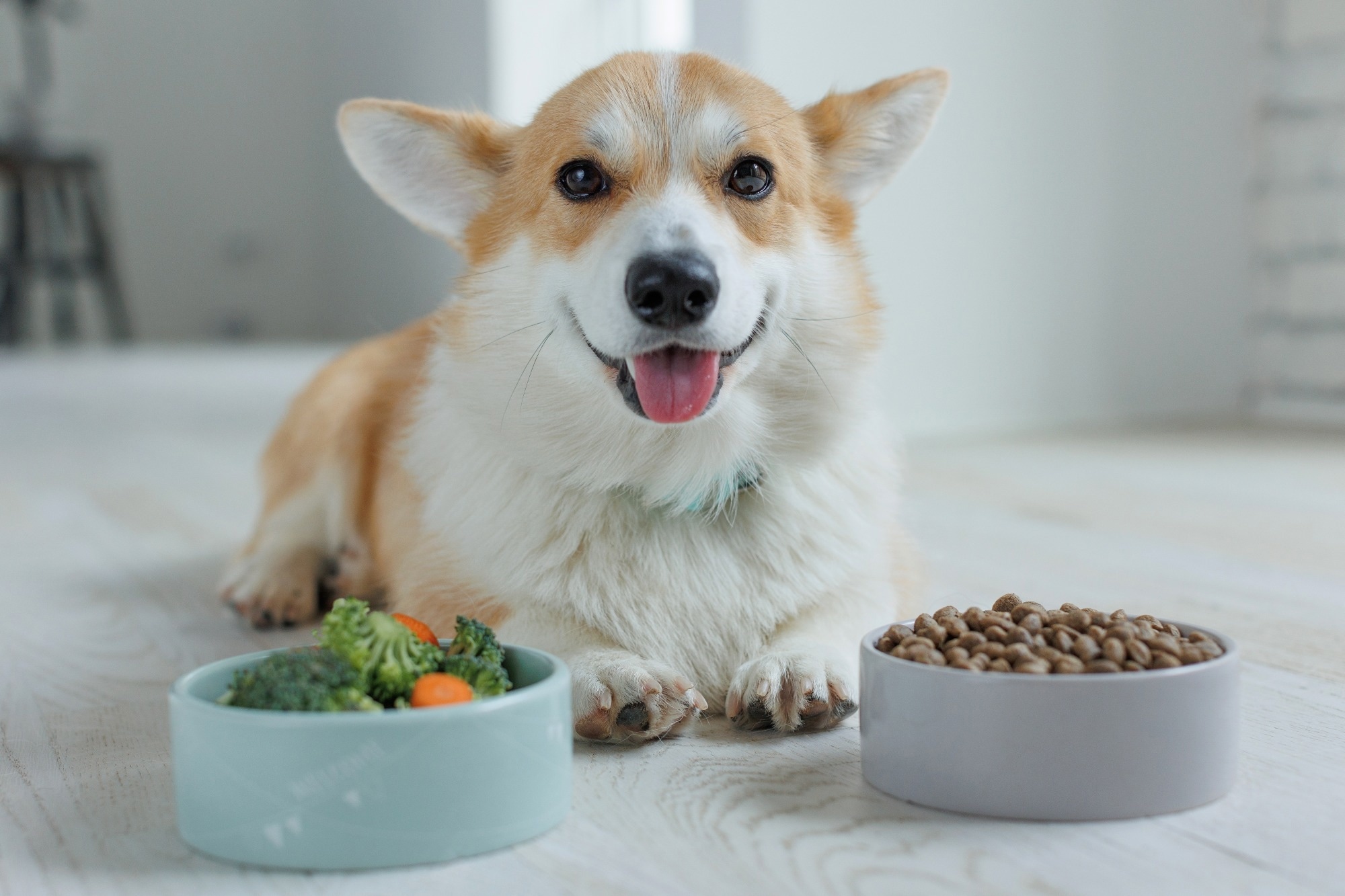In an evolving health landscape, emerging research continues to highlight concerns that could impact everyday wellbeing. Here’s the key update you should know about:
New research reveals just how much greener plant-based kibble is compared to meat-based dog food, from saving football fields of farmland to the carbon cost of long-haul flights.
Study: Environmental impact of feeding plant-based vs. meat-based dry dog foods in the United Kingdom. Image credit: Nina Buday/Shutterstock.com
Dry dog foods in the United Kingdom may be classified as plant-based or animal-based. Each has a different environmental impact. A recent paper in Frontiers in Sustainable Food Systems breaks down, for the first time, the environmental costs of each type of dog food.
Introduction
Plant-based foods have multiple health and environmental benefits when used as a main or sole part of the diet. Compared with animal-based foods, they generate far fewer greenhouse gases, cause less deforestation, and put less strain on soil fertility and biodiversity. They also reduce pressure on freshwater supplies and contribute less to soil and air pollution.
In 2018, the global dog population was about 471 million. While dogs are natural omnivores, meat-heavy diets drive significant greenhouse gas emissions worldwide, making up an estimated 2.5% to 8% of China’s total emissions. In Brazil, dog food was estimated to produce 3% to 25% of the country’s carbon dioxide emissions. Commercial dog food production produces threefold higher emissions than feeding dogs on human leftover food.
Prior research suggests that pet food production uses up 41 to 58 million hectares of farmland, or twice as much land as the entire area of the UK. Most of this comes from animal-based pet food manufacturing. According to human food supply chain statistics, plant protein production requires much less resource than animal meat production, but direct comparisons for pet food in the UK are lacking.
In the current study, the researchers looked specifically at 31 complete dry dog foods for adult dogs. They focused on the following parameters:
- How much land was used per 1,000 kcal
- Greenhouse gas emissions
- Acidifying emissions (sulfur dioxide, nitrogen oxides, and nitrates, which form acids like sulfuric or nitric acids in the air with water and oxygen, falling as acid rain)
- Eutrophying emissions (phosphate equivalents, which measure soil and waterway pollution from runoff water rich in inorganic phosphate and nitrogen dioxide)
- The amount of freshwater used per 1,000 kcal
In each case, lifecycle assessments were carried out, which are systematic assessments of the impact of each stage of the manufactured product’s life on the environment, from raw material extraction through processing, manufacturing, packaging, transportation, consumption, and waste disposal.
Study findings
Plant- and animal-based pet foods had similar proportions of protein, fat, and fiber, except for veterinary food, which had less protein but more fat, by design, as these were all renal diets. The top ingredients included grains like corn and white rice, poultry fat, sunflower oil, and wheat gluten. Other grains, raw chicken meat, meat and bone meal, pea, potato, and textured vegetable protein were relatively common.
Plant-based diets were the most environmentally friendly for all types of dog food. Poultry-based and veterinary diets ranked next in sustainability, while red meat, unsurprisingly, placed the heaviest burden on the environment.
For plant-based diets, land use was below 3 square meters per 1,000 kcal, similar to poultry. Veterinary diets were a little higher at ~13 square meters. In contrast, lamb- and beef-based dog food used over 100 square meters of land per 1,000 kcal.
Lamb meals required ~93 square meters per 1,000 kcal, meat and bone meal was 47 square meters, and beef liver approximately half of that. Plant-based foods included mainly soy, at 1.7-1.8 square meters per 1,000 kcal, depending on the formulation.
Similar trends were seen with greenhouse gas production, where plant-based, poultry-based, and veterinary foods had comparably low emissions. Lamb produced ~4.6 times and beef ~11 times higher emissions than plant-based foods at ~13 and 32 kg CO2eq, respectively, vs ~2.8 kg CO2eq for plant-based foods. Meat and bone meal and raw beef liver had the highest emissions.
The same picture was obtained with acidifying and eutrophying emissions. Beef-based foods produced up to ~14 times, and lamb-based foods ~3-5 times higher emissions than plant-based foods. Lamb-based dog food used the most freshwater (irrigation, livestock production, industrial use) at ~684 L/1,000 kcal, while beef used ~575 L/1,000 kcal. Conversely, plant-based food used ~250 L/1,000 kcal. Poultry (~383 L) and veterinary diets (~501 L) were intermediate but still considerably higher than plant-based.
Overall, a Labrador retriever, eating about 280g of food a day, would use up approximately 350,000 square meters of land (about 52-57 football fields) if fed on lamb- or beef-based food for the nine years of its adult life, vs 1.4 and 2.7 football fields with plant-based or veterinary foods, respectively. The greenhouse gas emissions would correspond to those of a Boeing 747 passenger taking 2.8 round-trips between New York and London, for a plant-based diet. With a veterinary or poultry-based diet, it would be nearer about five round-trips, soaring to 31 with lamb-based foods.
For multiple reasons, feeding dogs on animal byproducts did not make animal-based pet foods more sustainable.
Conclusions
The environmental cost of plant-based dog food is only a fraction of that of animal-based pet food. “Higher inclusion of plant-based ingredients in pet feed provides a major opportunity for pet food companies to mitigate the environmental footprint of companion animal food.”
However, the study assessed only environmental metrics; the authors note that nutritional bioavailability was outside its scope. They also highlight that while poultry and veterinary foods had a lower impact than beef or lamb, in some measures, their impacts overlapped with plant-based diets, meaning they were not always significantly different. Nonetheless, they remain substantially less sustainable than plant-based alternatives.
Using animal by-products does not close the sustainability gap, and circular food system approaches may be needed to reduce the sector’s overall impact.
